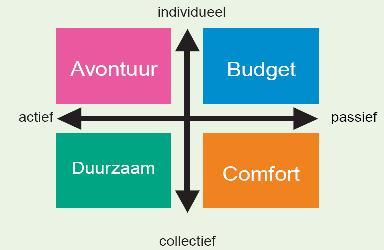Professional Reflection Egon Gleisberg
Professional Reflection
A couple of years ago, I did an internship for six in months at TNO Information and Communication Technology (Organisation for Applied Scientific Research). The internal team “Future Scanning” was developing a method and application “Sur5All” to get insight in the future proofness of (a collection) products or services. This team among other things looked to trends and needs and translated them to a vision or concept for future application. TNO wanted to test a couple of products / services and provide an answer to the question how Sur5All scored examples of products or services. In that way TNO could validate her own method and application and see if the products or services are fit for the future.
TNO wants to use Sur5All to score new ideas for products or services and give advise to which extent current products or services need to adjust to survive the future. If Sur5All is used, it gives a valuation to how much this product or service (or a whole portfolio) fits in different future portraits (future scenario’s). The higher the score for a future scenario, the better it fits in that future image. Starting point for this situation was that products or services that scored high in all scenario’s were called future proof. That means they can handle different changes in social needs. Sur5all combines with this method different subjects, like scenario analysis, trends, Maslow’ basic needs, windtunneling (to what extent does a product characteristic fits in a certain scenario?), product characteristics and dimensions of human behaviour.
People arrange their lives according a limited number of basic values. They serve to give some footing, take priorities and provide identity. Values affect our opinion, the choices we make and the actions we perform. To create a view on the variety of values the scenario system is divided in two dimensions:
- The first dimension draws a contrast between activism and passiveness. The difference between the two describe the extent to which people are inclined to explore and influence the environment, or to undergo external influences.
- The second dimension draws a contrast between individualism and collectiveness. The difference between the two describes to what extent people are inclined to prefer their own interest, or to conform themselves to the group where they are part of.
Together this axes form the following 4 scenario’s:
- Adventure, put central in this scenario is the value judgement ‘Pleasure’. (entertainment and short-lived)
- Budget, put central in this scenario is the value judgement ‘Profit’. (financial profit and own interest)
- Comfort, put central in this scenario is the value judgement ‘Ease’. (simplicity and outsourcing)
- Durability, put central in this scenario is the value judgement ‘Community’. (community and better world)
References:
[1] www.scenariothinking.org
[2] Paul. J.H. Schoemaker, 1995, Scenario Planning: A Tool for Strategic Thinking, Sloan Management Review
[3] Michael Y. Yoshino, Carin-Isabel Knoop, 2006, Scenario Planning Reconsidered, Harvard management update
